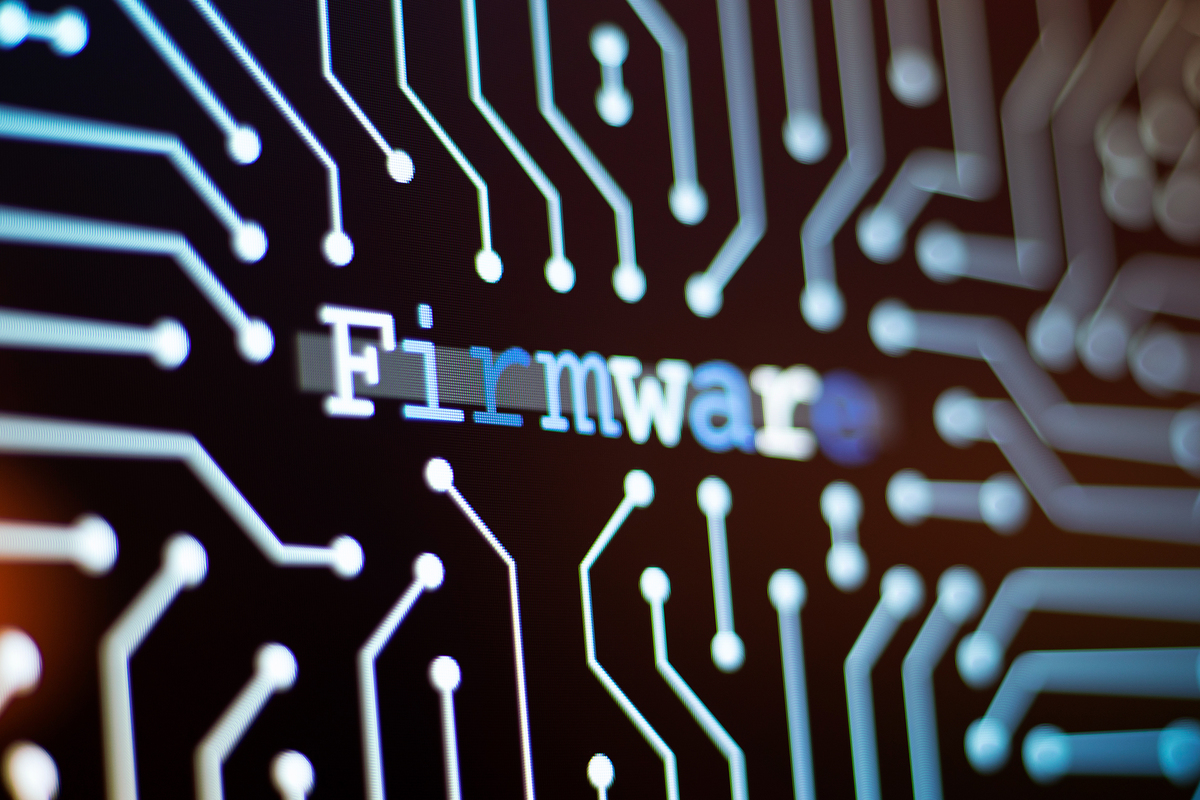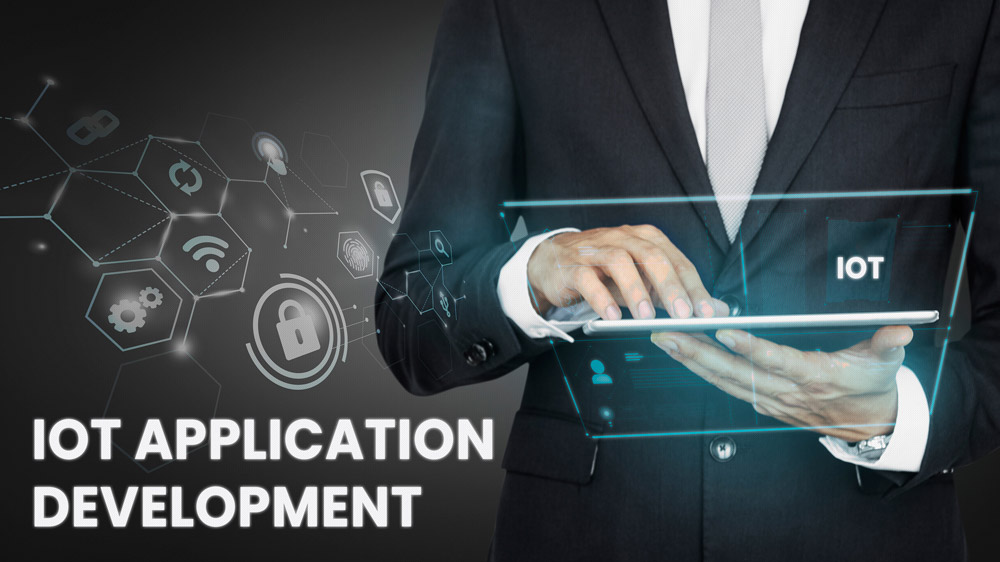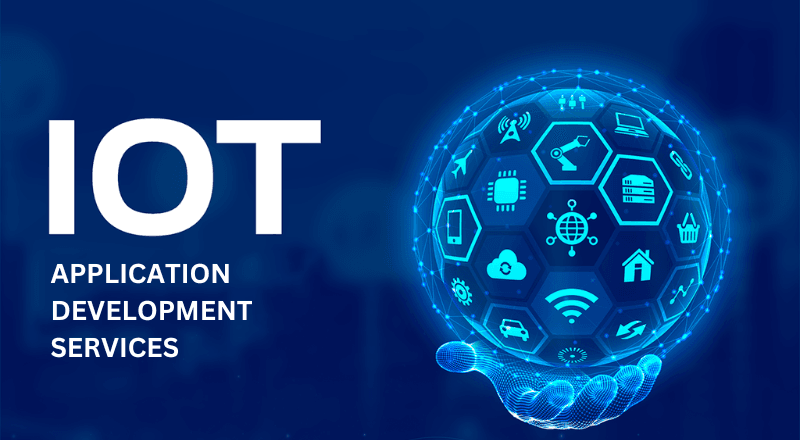IoT HarDWARE & FIRMWARE
We design and develope the IoT Device and Firmware based on Customer Request
IOT APPLICATION
We develope IoT application in IoT Platform, which can run on Web and Mobile Application to easy access for customer
IOT PLATFORM
We provide Industrial IoT Platform and also develop IoT Platform based on Customer Request (Cloud Based or On Premised or Hybrid)
IoT Device – Sensor
We design and develop IoT Device Base on Customer Requirement. We used industrial component susc as from US, Europe and China to follow the industrial standard Quality.

IoT Device
An IoT (Internet of Things) device is a physical object equipped with sensors, software, and other technologies that enable it to connect to the internet and exchange data with other devices, systems, or users. These devices are the building blocks of IoT ecosystems, allowing seamless communication, automation, and decision-making.

IoT Printed PCB and PCBA
We design and Printed PCBA with our Industrial Manufacture. A PCB is a flat board used to mechanically support and electrically connect electronic components using conductive pathways, tracks, or traces etched from copper sheets laminated onto a non-conductive substrate.Designing a Printed Circuit Board (PCB) involves creating a physical layout for electronic circuits, ensuring that components are connected and operate as intended.
We produce the PCBA with Industrial Component with Manufacturing Process. PCBA (Printed Circuit Board Assembly) refers to the process of mounting and soldering electronic components onto a Printed Circuit Board (PCB) to create a functional circuit board ready for use in electronic devices. It is an essential step in the manufacturing of electronic devices, where the bare PCB becomes a fully operational assembly.

IoT Firmware Development
We develop firmware for IoT device. Firmware in an IoT (Internet of Things) device refers to the specialized software programmed directly into the device’s hardware that controls its operation and enables it to interact with other devices or systems. It is typically stored in non-volatile memory such as flash memory, and it remains on the device even when it is powered off. Firmware is essential for the functionality, management, and performance of IoT devices.
Why Firmware is Important for IoT:
- Reliability: IoT devices need to be reliable and always function correctly in real-world environments. The firmware ensures that the device operates as expected under various conditions.
- Flexibility: Through firmware updates, IoT devices can be improved, patched, or reprogrammed after deployment, enhancing the device’s lifespan.
- Security: IoT devices are often exposed to cybersecurity threats, and the firmware helps secure the device, ensuring that vulnerabilities are patched and communications are encrypted.
In summary, the firmware is the backbone of an IoT device, providing all the necessary instructions for its functionality, communication, and security.
IoT Application Development

We develop IoT application based onn web and mobile application. IoT App development is the process of creating application that enable the interaction and management of Internet Of Things (IoT) devices. This involves integrating hardware, software and network technologies to facillitate seamless communication and data exchange between connected devices and users.

As we have seen, the IoT System Architecture is laid out across several layers sucg as physical layer, the network layer, the middleware layer and the application layer. That then cascades into 4 stages that capture data, analyze, process and suggest corrective measures using high-end applications.

The key stages of IoT Application development involve planning and design , development including selecting languages and architecture, testing and validation, deployment strategies and ongoing security measures
IoT Platform
We provide Industrial IoT Platform or we can develop IoT Platform based on what Customer needs.
IoT Platform refers to an infrastructure of IoT elements including gateways, sensors, actuators, communication protocol, cloud server setup and end user application interface. An IoT Platform is an application or service thatprovides built-in tools and capabilities to connect every ‘thing’ in an IoT ecosystem. By Providing functions including device lifecycle management, device communication, data analytics, integration and application enablement.

IOT DEVICE
An IoT (Internet of Things) device is a physical object equipped with sensors, software, and other technologies that enable it to connect to the internet and exchange data with other devices, systems, or users. These devices are the building blocks of IoT ecosystems, allowing seamless communication, automation, and decision-making.
Key Features of IoT Devices
1. Connectivity:
o IoT devices are connected to the internet or local networks (via Wi-Fi, Bluetooth, cellular networks, or other communication protocols) for data exchange.
2. Sensors and Actuators:
o Sensors: Gather data about the environment (e.g., temperature, humidity, motion).
o Actuators: Perform actions in response to received commands (e.g., turning on a motor or light).
3. Embedded Systems:
o IoT devices have microcontrollers or processors (e.g., Arduino, Raspberry Pi) to process data and execute tasks.
4. Data Processing:
o Some devices process data locally (edge computing), while others send data to the cloud for processing and storage.
5. Automation and Intelligence:
o Many IoT devices use AI and machine learning to make smart decisions or predictions.
Components of an IoT Device
1. Hardware:
o Sensors and actuators.
o Communication modules (e.g., Wi-Fi, Zigbee, LoRa).
o Microcontrollers or microprocessors.
2. Software:
o Firmware to control the hardware.
o Applications to process and visualize data.
3. Power Source:
o Batteries, solar panels, or power adapters.
4. Connectivity:
o Protocols like MQTT, HTTP, CoAP, or WebSocket to communicate data.
How IoT Devices Work
1. Data Collection: Sensors gather real-time data from the environment (e.g., temperature, motion, light).
2. Data Transmission: The collected data is transmitted to a gateway, cloud platform, or local storage using communication protocols.
3. Data Processing: Data is analyzed either on the device, at the gateway, or in the cloud to derive actionable insights.
4. Action: Based on the analysis, the IoT system triggers actions, such as sending alerts, adjusting settings, or activating actuators.
Key Benefits of IoT Devices
1. Automation: Reduces the need for human intervention in repetitive tasks.
2. Efficiency: Enhances productivity and optimizes resource usage.
3. Convenience: Improves quality of life through smart applications.
4. Insights: Provides valuable data for decision-making and trend analysis.
PCB
Designing a Printed Circuit Board (PCB) involves creating a physical layout for electronic circuits, ensuring that components are connected and operate as intended. Here’s a detailed overview of the process:
1. What is a PCB?
A PCB is a flat board used to mechanically support and electrically connect electronic components using conductive pathways, tracks, or traces etched from copper sheets laminated onto a non-conductive substrate
2. Steps in PCB Design
A. Conceptualization and Requirements
- Objective: Define the purpose of the circuit, including its specifications (e.g., voltage, current, and performance).
- Tools: Block diagrams or schematics.
- Components: List all required components (e.g., resistors, capacitors, ICs, connectors).
B. Schematic Design
- Schematic Capture: Use software (e.g., KiCad, Eagle, Altium Designer) to create a diagram that represents the circuit.
- Symbol Libraries: Ensure correct component symbols and footprints are available.
- Netlist Generation: The netlist maps the connections between components and guides the PCB layout phase.
C. PCB Layout Design
- Board Dimensions: Define the physical size of the PCB.
- Placement: Arrange components considering electrical performance, heat dissipation, and accessibility.
- Routing:
- Signal Traces: Connect components following the schematic’s netlist.
4. Inspection and Testing:
o Automated Optical Inspection (AOI): Verifies the correct placement and soldering of components.
o X-Ray Inspection: Examines hidden solder joints (e.g., under Ball Grid Array (BGA) packages).
o Electrical Testing:
§ In-Circuit Testing (ICT): Checks individual components and connections.
§ Functional Testing (FCT): Verifies that the assembled board performs as intended.
5. Cleaning:
o Removes any flux residues or contaminants that could affect performance or reliability.
6. Packaging:
o The final PCBA is packed for integration into the final product or shipment to customers.
2.Common Methods Used in PCBA
A. Surface Mount Technology (SMT):
- Ideal for small, high-density components.
- Automated and widely used in modern PCBA.
B. Through-Hole Technology (THT):
- More robust for mechanical stress.
- Common in power electronics and industrial applications.
C. Mixed Technology:
Combines SMT and THT for boards requiring both technologies.
3. Applications of PCBA
- Consumer Electronics: Smartphones, TVs, gaming consoles.
- Automotive: Engine control units (ECUs), infotainment systems.
- Medical Devices: Heart rate monitors, imaging systems.
- Industrial Equipment: Automation controllers, sensors.
- Aerospace and Defense: Avionics, communication systems
4. Challenges in PCBA
1. Component Placement Precision: High-density boards demand accurate placement.
2. Soldering Defects: Misaligned components or insufficient solder can lead to short circuits.
3. Thermal Management: Heat-sensitive components need careful handling during soldering.
4. Quality Control: Ensuring reliability through rigorous testing is essential.
5. Supply Chain Issues: Component shortages can delay production.
5. Advantages of PCBA
- Miniaturization: Enables compact and lightweight designs.
- Automation-Friendly: Reduces manual labor with SMT processes.
- Reliability: Testing ensures durability and performance.
- Scalability: Can be mass-produced efficiently.
IoT firmware development
refers to creating and programming the low-level software that controls the hardware of an Internet of Things (IoT) device. Firmware acts as a bridge between the hardware and higher-level software applications, enabling IoT devices to perform their intended functions, communicate with other devices, and execute commands.
1. What is Firmware in IoT?
- Definition: Firmware is a specialized type of software embedded in a hardware device, controlling its operation.
Role in IoT: Firmware manages the device’s sensors, actuators, and communication modules, allowing it to interact with its environment and send/receive data.
2. Key Responsibilities of IoT Firmware
1. Device Initialization:
o Configures hardware components (e.g., sensors, microcontrollers, communication modules).
2. Data Acquisition:
o Reads input from sensors.
3. Data Processing:
o Filters, formats, or preprocesses data before transmission or storage.
4. Communication:
o Handles data transmission and reception using communication protocols like MQTT, HTTP, CoAP, Bluetooth, or LoRa.
5. Device Control:
o Interfaces with actuators to perform physical actions (e.g., turning on a motor or light).
6. Power Management:
o Optimizes power consumption to extend battery life.
7. Over-the-Air (OTA) Updates:
o Enables remote firmware updates to add features or fix bugs.
3. Steps in IoT Firmware Development
A. Define Requirements
- Identify the hardware platform (e.g., microcontroller, sensors, communication module).
- Understand the device’s functionality, operating conditions, and power constraints.
B. Hardware Abstraction
- Develop drivers to interface with hardware components like sensors, actuators, and communication modules.
C. Write the Firmware Code
- Use a programming language (commonly C or C++).
- Implement tasks such as:
- Sensor data collection.
- Protocol handling (e.g., MQTT or HTTP).
- Actuator control.
D. Integration with IoT Protocols
- Ensure compatibility with communication standards like:
- MQTT for lightweight, publish-subscribe messaging.
- HTTP for web-based data exchange.
- CoAP for constrained devices.
E. Testing and Debugging
- Simulation: Test firmware in a simulated environment to identify issues before deploying to hardware.
- Hardware-in-the-Loop (HIL) Testing: Verify firmware functionality on the actual device.
- Debug using tools like JTAG debuggers or serial monitors.
F. Deployment
- Load firmware onto the IoT device using a bootloader.
- Implement OTA capabilities for easy updates.
G. Maintenance and Updates
- Address bugs, improve performance, and introduce new features over time.
4. Tools and Platforms for IoT Firmware Development
Microcontroller Platforms:
- Arduino: Beginner-friendly platform with extensive libraries.
- ESP32/ESP8266: Wi-Fi-enabled microcontrollers for IoT applications.
- STM32: High-performance microcontrollers used in industrial IoT.
- Raspberry Pi Pico: Affordable and versatile microcontroller.
Development Environments:
- Arduino IDE: Simplified IDE for Arduino-based projects.
- PlatformIO: Cross-platform development for embedded devices.
- Keil uVision: ARM-based microcontroller development.
- MPLAB X IDE: Used for PIC microcontrollers.
IoT Operating Systems:
- FreeRTOS: Lightweight real-time OS for resource-constrained devices.
- Zephyr: Open-source OS for IoT.
- Mbed OS: OS designed for ARM Cortex microcontrollers.
- RIOT OS: Designed for low-power IoT devices.
5. Challenges in IoT Firmware Development
1. Resource Constraints:
o Limited memory, processing power, and energy require efficient coding.
2. Real-Time Requirements:
o Firmware often needs to meet real-time performance standards for time-critical tasks.
3. Security:
o Protecting data and firmware from unauthorized access and tampering.
4. Interoperability:
o Ensuring firmware works across diverse hardware and communication protocols.
5. OTA Updates:
o Implementing reliable and fail-safe update mechanisms.
6. Debugging:
o Difficulties in debugging low-level code, especially in constrained environments.
6. Why is Firmware Important in IoT?
- Device Functionality: Ensures the IoT device operates as intended.
- Reliability: Handles real-time operations and error management.
- Scalability: Supports new features and improvements through updates.
- Security: Protects sensitive data and maintains device integrity.
IoT Application Development
involves creating software applications that interact with Internet of Things (IoT) devices to collect, process, analyze, and visualize data, enabling users to monitor and control connected devices. These applications are central to the IoT ecosystem, bridging the gap between devices, data, and users.
1. Key Components of IoT Application Development
A. IoT Devices
- Role: Sensors, actuators, and controllers collect data or perform actions.
- Examples: Smart thermostats, wearables, and industrial sensors.
B. Communication
- Protocols: MQTT, HTTP, CoAP, Zigbee, LoRaWAN, Bluetooth.
- Purpose: Transmit data from IoT devices to the cloud or other devices.
C. Cloud Services
- Role: Store, process, and analyze data from IoT devices.
- Examples: AWS IoT Core, Azure IoT Hub, Google Cloud IoT Core.
D. Data Analytics and AI
- Role: Process large volumes of IoT data to extract meaningful insights.
- Examples: Predictive maintenance, anomaly detection.
E. User Interfaces
- Role: Allow users to interact with IoT devices and view analytics.
- Examples: Mobile apps, web dashboards, voice assistants.
2. Steps in IoT Application Development
A. Define Requirements
- Identify Use Cases: Determine the purpose of the application (e.g., monitoring, automation, control).
- Device Integration: Specify supported devices and communication protocols.
- User Needs: Understand user interactions and expectations.
B. Architecture Design
- System Architecture: Define how devices, cloud, and applications communicate.
- Data Flow: Design the flow of data from devices to the application and back.
- Scalability and Security: Ensure the system can handle growth and is secure against threats.
C. Backend Development
- Device Integration Layer:
- Manages communication with IoT devices.
- Handles data ingestion using protocols like MQTT or HTTP.
- Database Design:
- Stores device data and user information.
- Supports time-series databases for IoT data (e.g., InfluxDB).
- APIs:
- Expose data and device controls to front-end applications.
D. Frontend Development
- Mobile Applications:
- Enable users to monitor and control devices.
- Frameworks: Flutter, React Native, or native development (Swift, Kotlin).
- Web Applications:
- Dashboards for real-time monitoring and historical data analysis.
- Technologies: React, Angular, or Vue.js.
- Voice and AI Assistants:
- Integrate with Alexa, Google Assistant, or Siri for voice commands.
E. Cloud and Analytics Integration
- Data Processing:
- Use cloud platforms or edge computing to analyze IoT data.
- AI and ML Integration:
- Predictive analytics and automated decision-making.
- Storage:
- Choose scalable and cost-effective solutions (e.g., AWS S3, Azure Blob).
F. Security Implementation
- Data Encryption: Ensure data is encrypted during transmission and storage.
- Authentication and Authorization: Use secure methods like OAuth 2.0.
Device Security: Implement secure boot and firmware updates.
G. Testing and Deployment
- Functional Testing: Ensure the app interacts correctly with devices.
- Performance Testing: Validate app performance under load.
- Deployment: Publish apps on app stores or deploy web dashboards.
H. Maintenance and Updates
- OTA Updates: Update device firmware or application features remotely.
- Bug Fixes and Enhancements: Regularly improve the application based on user feedback.
3. Tools and Technologies for IoT Application Development
A. Platforms:
- AWS IoT Core: Cloud platform for IoT device management.
- Microsoft Azure IoT Hub: Integrates with Microsoft services for analytics.
- Google Cloud IoT Core: Scalable platform for device data management.
B. Programming Languages:
- Backend: Python, Node.js, Java, Go.
- Frontend: JavaScript, Swift, Kotlin, or frameworks like React Native.
C. Protocols:
- MQTT: Lightweight, publish-subscribe messaging.
- HTTP/HTTPS: General-purpose communication.
- WebSockets: Real-time communication.
D. Tools:
- IoT Development Boards: Arduino, ESP32, Raspberry Pi.
- IDE and SDKs: PlatformIO, Visual Studio Code, or cloud SDKs.
4. Key Challenges in IoT Application Development
1. Scalability:
o Designing systems to handle growing numbers of devices and data volume.
2. Security:
o Protecting sensitive data and ensuring device integrity.
3. Interoperability:
o Ensuring compatibility between devices from different manufacturers.
4. Latency:
o Maintaining low-latency communication for real-time applications.
5. Energy Efficiency:
- o Optimizing device and app operations for low-power IoT devices.
5. Benefits of IoT Applications
- Convenience: Automates tasks and provides remote access.
- Efficiency: Optimizes resource usage (e.g., energy, water).
- Insights: Delivers valuable analytics and decision support.
- Cost Savings: Reduces operational costs through automation and predictive maintenance.